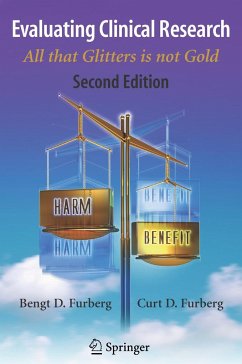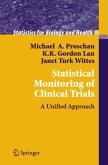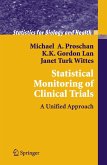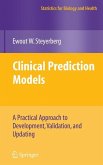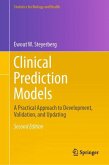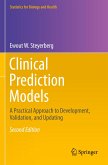The objective of this book is to make its readers better informed and more critical consumers of clinical research to help them recognize the strengths and the weaknesses of scientific publications. In doing so, the reader will be able to distinguish patient-important and methodologically sound studies from those having limitations in design, conduct and interpretation.
There are no prerequisites for reading this book. The text is basic and has no statistical formulas. Key take-home messages are listed at the end of each chapter. The large number of cartoons has two purposes: First, to make the text easier to read and generate a few laughs and, second, to underscore specific points, sometimes in a provocative way.
There are no prerequisites for reading this book. The text is basic and has no statistical formulas. Key take-home messages are listed at the end of each chapter. The large number of cartoons has two purposes: First, to make the text easier to read and generate a few laughs and, second, to underscore specific points, sometimes in a provocative way.
From the reviews of the second edition:
"Evaluating Clinical Research is simply the best introductory book of the science of clinical research you can read in two hours. The title grossly understates the appropriate readership; every new investigator and clinical research professional should start with this book." (Norman M. Goldfarb, Journal of Clinical Research Best Practices, Vol. 6, No. 1, January 2010)
"Evaluating Clinical Research is only 161 pages in length and contains 26 chapters. ... Students have found the book clearly written and logical to follow. Faculty members who have purchased this textbook have commented on the usefulness of the book in brushing up on literature evaluation topics ... . In summary, Evaluating Clinical Research, 2nd ed, can be recommended as a required textbook for drug information courses and a refresher text for pharmacy practice faculty members." (Larry Sasich, American Journal of Pharmaceutical Education, Vol. 72 (2), 2008)
"Authors provide tools to evaluate pros and cons of these studies in order to distinguish worthwhile from flawed. . . . . A readable and informative book that provides valuable insight into an important segment of our medical system. . . . Authors have included many humorous cartoons that underscore specific points in a provocative way. There also is a handy glossary of terms connected with clinical studies." (Douglas C. Borton, Actuarial Digest, Spring ed., 2008)
"The authors not only cover most of the major concepts required to evaluate clinical research literature, but also manage to address more nuanced concepts such as intermediate and composite end points and meta-analysis. . . . A particular strength of this book is that the authors end the book with a resource-rich chapter listing available literature databases and a straighforward checklist of issues. . . ." (Rachel Wildman, American Journal ofHypertension, Vol. 21, Novmeber 2008)
"Readership: Health care professionals, pharmaceutical company employees, and others who wish to be able to understand the ... clinical studies. ... Its aim is to enable a non-statistical reader to distinguish sound methodology from weak methodology in clinical trials. This is a highly laudable and valuable aim. Moreover, the book has the merit of containing no mathematics or statistics ... to appeal to the intended audience. It also has the merit of being short ... to be read by the busy health care workers." (David J. Hand, International Statistical Review, Vol. 76 (1), 2008)
"Doctors prescribe inefficiently. Many conditions, such as hypertension, are inadequately treated whereas others, such as depression, are overtreated. Bearing in mind the plethora of guidelines now available on virtually every sector of medicine, this seems inexcusable. Whether due to ignorance, indolence, or incredulity, many physicians are not implementing the recommendations of 'experts'.
Conscientious clinicians may think that the advice available from the 'experts' does not apply to the patients they see and will want to assess the evidence for themselves, so that their practice will provide the best management for their patients. It is for such people that this book has been written. The writing is excellent and it is embellished by amusing cartoons and witty one-line quotations. The authors have tried, but not completely succeeded, in avoiding statistics. Their extensive personal experience has enabled them to give good examples to illustrate their points, although they also quote widely from the world literature.
They start by emphasizing the importance of evaluating the balance between benefit and harm. Unfortunately, all too often, papers and presentations, as well as pharmaceutical companies, often highlight the benefits of new treatments while saying little about the adverse effects.
Thevalue of randomized controlled trials (RCTs) as the bedrock of evidence-based medicine is unquestionable, but the shortcomings are often ignored-especially by 'experts'. The authors discuss both the strengths and weaknesses of randomized RCTs. The chapter on weaknesses is largely concerned with the inability of RCTs, because of their limited size, to recognize rare side effects. Although referred to later in the book, the unrepresentative nature of those recruited into trials is given insufficient attention. This is a major reason why practising physicians are often sceptical about the results of trials.
Having stressed that RCTs 'rank highly in terms of reliability for evaluating treatments,' one may question the authors' claim that 'at the top of the ranking are meta-analyses of clinical trials'. In fact, as experience has shown, large individual trials may provide more convincing evidence than a meta-analysis.
In later chapters, they consider such important topics as the doubtful value of surrogate endpoints and biochemical markers, and they also discuss whether active controls can be relied upon and whether all drugs in a class are interchangeable. Much attention is paid to the measurement of adverse drug reactions but here, as elsewhere, discussion is focused on practices in the United States, whereas these issues are often better tackled in other countries (where many of their readers will be located).
Overall, this is an excellent book that can be strongly recommended to the target audience which is, as the authors state, ''clinicians and others in the health care field as well as employees in companies manufacturing drugs, devices and other medical products'." (Trials, Volume 9, 2008)
"Evaluating Clinical Research is simply the best introductory book of the science of clinical research you can read in two hours. The title grossly understates the appropriate readership; every new investigator and clinical research professional should start with this book." (Norman M. Goldfarb, Journal of Clinical Research Best Practices, Vol. 6, No. 1, January 2010)
"Evaluating Clinical Research is only 161 pages in length and contains 26 chapters. ... Students have found the book clearly written and logical to follow. Faculty members who have purchased this textbook have commented on the usefulness of the book in brushing up on literature evaluation topics ... . In summary, Evaluating Clinical Research, 2nd ed, can be recommended as a required textbook for drug information courses and a refresher text for pharmacy practice faculty members." (Larry Sasich, American Journal of Pharmaceutical Education, Vol. 72 (2), 2008)
"Authors provide tools to evaluate pros and cons of these studies in order to distinguish worthwhile from flawed. . . . . A readable and informative book that provides valuable insight into an important segment of our medical system. . . . Authors have included many humorous cartoons that underscore specific points in a provocative way. There also is a handy glossary of terms connected with clinical studies." (Douglas C. Borton, Actuarial Digest, Spring ed., 2008)
"The authors not only cover most of the major concepts required to evaluate clinical research literature, but also manage to address more nuanced concepts such as intermediate and composite end points and meta-analysis. . . . A particular strength of this book is that the authors end the book with a resource-rich chapter listing available literature databases and a straighforward checklist of issues. . . ." (Rachel Wildman, American Journal ofHypertension, Vol. 21, Novmeber 2008)
"Readership: Health care professionals, pharmaceutical company employees, and others who wish to be able to understand the ... clinical studies. ... Its aim is to enable a non-statistical reader to distinguish sound methodology from weak methodology in clinical trials. This is a highly laudable and valuable aim. Moreover, the book has the merit of containing no mathematics or statistics ... to appeal to the intended audience. It also has the merit of being short ... to be read by the busy health care workers." (David J. Hand, International Statistical Review, Vol. 76 (1), 2008)
"Doctors prescribe inefficiently. Many conditions, such as hypertension, are inadequately treated whereas others, such as depression, are overtreated. Bearing in mind the plethora of guidelines now available on virtually every sector of medicine, this seems inexcusable. Whether due to ignorance, indolence, or incredulity, many physicians are not implementing the recommendations of 'experts'.
Conscientious clinicians may think that the advice available from the 'experts' does not apply to the patients they see and will want to assess the evidence for themselves, so that their practice will provide the best management for their patients. It is for such people that this book has been written. The writing is excellent and it is embellished by amusing cartoons and witty one-line quotations. The authors have tried, but not completely succeeded, in avoiding statistics. Their extensive personal experience has enabled them to give good examples to illustrate their points, although they also quote widely from the world literature.
They start by emphasizing the importance of evaluating the balance between benefit and harm. Unfortunately, all too often, papers and presentations, as well as pharmaceutical companies, often highlight the benefits of new treatments while saying little about the adverse effects.
Thevalue of randomized controlled trials (RCTs) as the bedrock of evidence-based medicine is unquestionable, but the shortcomings are often ignored-especially by 'experts'. The authors discuss both the strengths and weaknesses of randomized RCTs. The chapter on weaknesses is largely concerned with the inability of RCTs, because of their limited size, to recognize rare side effects. Although referred to later in the book, the unrepresentative nature of those recruited into trials is given insufficient attention. This is a major reason why practising physicians are often sceptical about the results of trials.
Having stressed that RCTs 'rank highly in terms of reliability for evaluating treatments,' one may question the authors' claim that 'at the top of the ranking are meta-analyses of clinical trials'. In fact, as experience has shown, large individual trials may provide more convincing evidence than a meta-analysis.
In later chapters, they consider such important topics as the doubtful value of surrogate endpoints and biochemical markers, and they also discuss whether active controls can be relied upon and whether all drugs in a class are interchangeable. Much attention is paid to the measurement of adverse drug reactions but here, as elsewhere, discussion is focused on practices in the United States, whereas these issues are often better tackled in other countries (where many of their readers will be located).
Overall, this is an excellent book that can be strongly recommended to the target audience which is, as the authors state, ''clinicians and others in the health care field as well as employees in companies manufacturing drugs, devices and other medical products'." (Trials, Volume 9, 2008)

